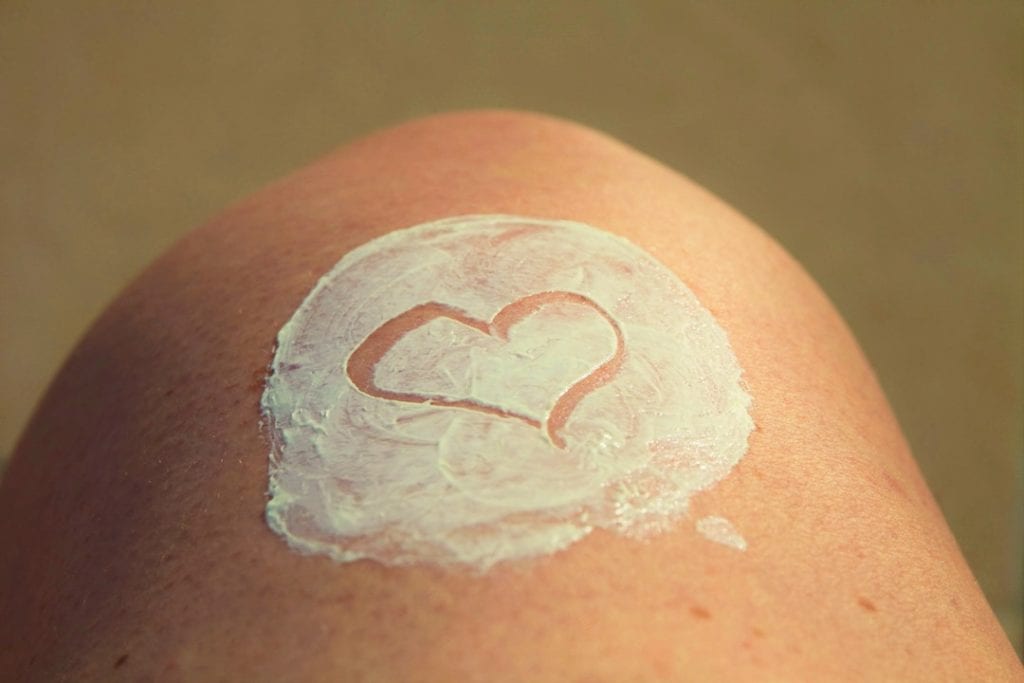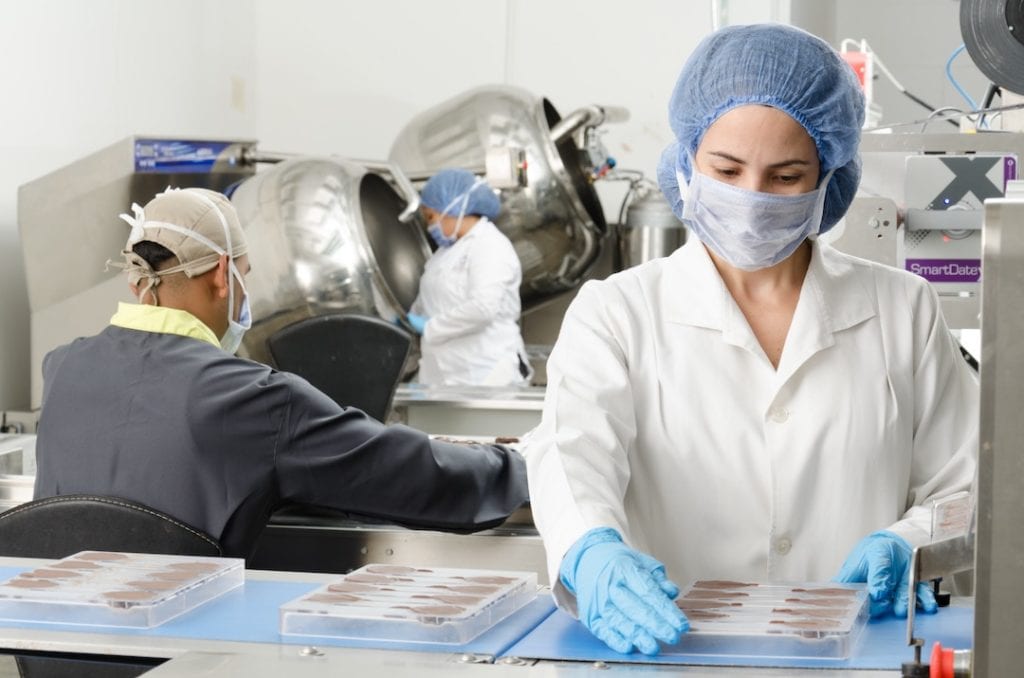
A high SPF and a moderate price tag—that’s how Americans typically choose a sunscreen. We see 50+ on a label and trust it to be effective in protecting our skin. Here’s a surprise: Consumer Reports, the Food and Drug Administration and many other credible resources have found that our beliefs about SPF, and sun protection in general, aren’t the most reliable measure of how much protection we are actually getting. In fact, we are putting our faith in products that may be doing more harm than good.
Many people wouldn’t think twice about not protecting their skin, especially in spring and summer months. There is a wide variety of products and options for anyone in the market for sun protection; however, we hardly question what’s behind the label. Ever see SPF on a label and just think, “Yeah, I know I need to be using that”? What about, “Okay, so what is actually in this?” or “What the heck am I putting on my skin?” Maybe some of us don’t even know what “SPF” stands for or how it works. Let’s take a look.
What Does “SPF” Mean?
“SPF” stands for sun protection factor. This is the familiar number we see on things like sunscreen, makeup and lotion. The number is a rating used to measure the amount of time it takes for exposed skin to burn. SPF ratings are given to products as a measure of how well a sun protection product guards against ultraviolet B (UVB) rays, the main cause of sunburn and a contributor to skin cancer. All sunscreens are tested and then labeled with the appropriate SPF value. Higher SPF values are supposed to provide greater sunburn protection. It is important to note here that SPF is only relating to the effectiveness of a product to protect against UVB rays. UVA rays pierce the skin more deeply than UVB—we will touch more on this later.
Higher SPF Numbers Don’t Mean “Safer”

A popular misconception is that the higher the SPF, the more effective it is at protecting your skin from sun damage. However, because of the variety in types of products as well as intensity of sun, there is a natural variance in levels of protection. Ultra-high SPF claims are frequently used on packaging, but the U.S. FDA hasn’t approved modern sunscreen ingredients that would do a better job of broad-spectrum protection. A lot of us would be surprised to find out that in other developed countries, SPF is usually capped at 50.
As far as labeling, we tend to skim over the term “broad spectrum.” It is intentionally included for a very important reason that we should not overlook. Remember the distinction between SPF ratings and UVB rays? Well, products that pass the broad-spectrum test can demonstrate that they also provide UVA protection. Therefore, under the label requirements, sunscreens labeled “Broad Spectrum SPF [value]” indicate protection from both UVA and UVB radiation. Not all sunscreens are broad spectrum, so it is important to look for it on the label. Broad spectrum provides protection with a chemical barrier that absorbs or reflects UV radiation before it can damage the skin (again, we will get to those chemicals in a moment).
The FDA recommends using broad-spectrum sunscreens with SPF values of 15 or higher regularly and as directed. In the same vein, as of July 2019, Consumer Reports—which has tested a multitude of sun protection products—has its SPF recommendation at SPF 40. Again, recommendations vary between sources; this is to show that “more” doesn’t always mean “better” when it comes to SPF.
How Sunscreen Works

We know that there are two forms of sunrays: UVA and UVB. UVA rays are present throughout the daylight hours, even on cloudy days, while UVB rays are strongest from 10AM to 4PM. So how do we protect our skin against radiation? You guessed it—sunscreen!
Sunscreen helps to filter out UV radiation using a combination of two main types of active ingredients: inorganic particles (which form a physical barrier, reflecting or scattering UV waves) and organic components (which are responsible for the absorption of UV rays, releasing their energy as heat).
Ingredients
The basic ingredients in sunscreens are often similar. Just like any drug, there are active ingredients and inactive ingredients in sunscreen. Typically, active ingredients are the ones protecting your skin from the sun’s harmful UV rays, while inactive ingredients are all the other ingredients that may be used in formulating sunscreens.
Some commonly found ingredients are:
- Aminobenzoic acid
- Avobenzone
- Cinoxate
- Dioxybenzone
- Homosalate
- Meradimate
- Octocrylene
- Octinoxate
- Octisalate
- Oxybenzone
- Padimate O
- Ensulizole
- Sulisobenzone
- Titanium dioxide
- Trolamine salicylate
- Zinc oxide
Price has almost nothing to do with the effectiveness of the product you choose when it comes to sunscreen. High price tags are normally associated with the cosmetic nature of a product, or how it feels on your skin. Although most of these ingredients sit on the surface of the skin, reflecting harsh UV rays, there is evidence that at least some active ingredients may be absorbed through the skin and enter the body.
Chemical Concerns

On the topic of ingredients, a few commonly used chemicals have brought up questionable reviews. As of 2019, the FDA has called for more research on the safety and effectiveness of 12 common chemical sunscreen ingredients, including oxybenzone, avobenzone, homosalate, octinoxate, octisalate and octocrylene. Of these 12, the one most often flagged as potentially worrisome is oxybenzone.
Oxybenzone has been widely used in sunscreens because of its effectiveness in protecting against both UVA and UVB rays. There are concerns about it because of its absorption rate into the bloodstream. When absorbed, it acts like estrogen in the body and in studies has been linked to abnormal sperm function in men and endometriosis in women. Oxybenzone also acts as a skin allergen in a significant number of people.
Other concerning chemicals include titanium dioxide and zinc oxide, which are used in mineral or “natural” sunscreen products. These don’t warrant the same health concerns as chemical sunscreen ingredients such as oxybenzone because they sit on the surface of the skin and aren’t absorbed. However, Consumer Reports and the FDA both note that they don’t necessarily protect the skin as well as sunscreens with chemical ingredients. Most concerns with these have to do with the safety of inhaling particles, but researchers say the benefits of sunscreens “outweigh potential risks from their ingredients.”
Application

A surefire way to get the most out of any sunscreen you choose is to use it correctly. Regardless of the SPF, it is recommended by the FDA and the Skin Cancer Foundation to follow these guidelines when applying sunscreen:
- Apply the sunscreen 15 to 30 minutes before going outside.
- Use 2 or 3 tablespoons to cover your body.
- Make sure you reapply every 2 hours (and more often if you’re sweating or jumping in and out of the water).
- If you use a sunscreen spray, spray yourself twice to get the spots you missed.
- Avoid storing sunscreen in a hot car, as it may become less effective more quickly.
- Everyone, including babies six months and older and people of any skin tone, needs to use sunscreen.
Types
There are many different forms of sun protection on the market, including lotions, creams, sticks, gels, oils, butters, pastes and sprays. It is important to note that nonprescription sunscreen products in the form of wipes, towelettes, powders, body washes and shampoos have not been authorized by the FDA. It is also important to note that there is no such thing as “waterproof” sunscreen. All sunscreens eventually wash off. Per the FDA, “Sunscreens labeled ‘water resistant’ are required to be tested according to the required SPF test procedure. The labels are required to state whether the sunscreen remains effective for 40 minutes or 80 minutes when swimming or sweating, and all sunscreens must provide directions on when to reapply.”
A great way to find out if you are using a good sunscreen or if you are in the market for a new product is to check for the Skin Cancer Foundation’s Seal of Recommendation. The seal is widely accepted as a symbol of safe and effective sun protection that is recognized by consumers worldwide. If you can’t find one of these products, Consumer Reports has done extensive testing to put together a buying guide for consumers to use for free.
There are so many different products out there, which is why it is so important to do your research before putting something in or on your body. This post is just one more step in the right direction toward your healthiest and happiest skin! We hope you found it useful.


